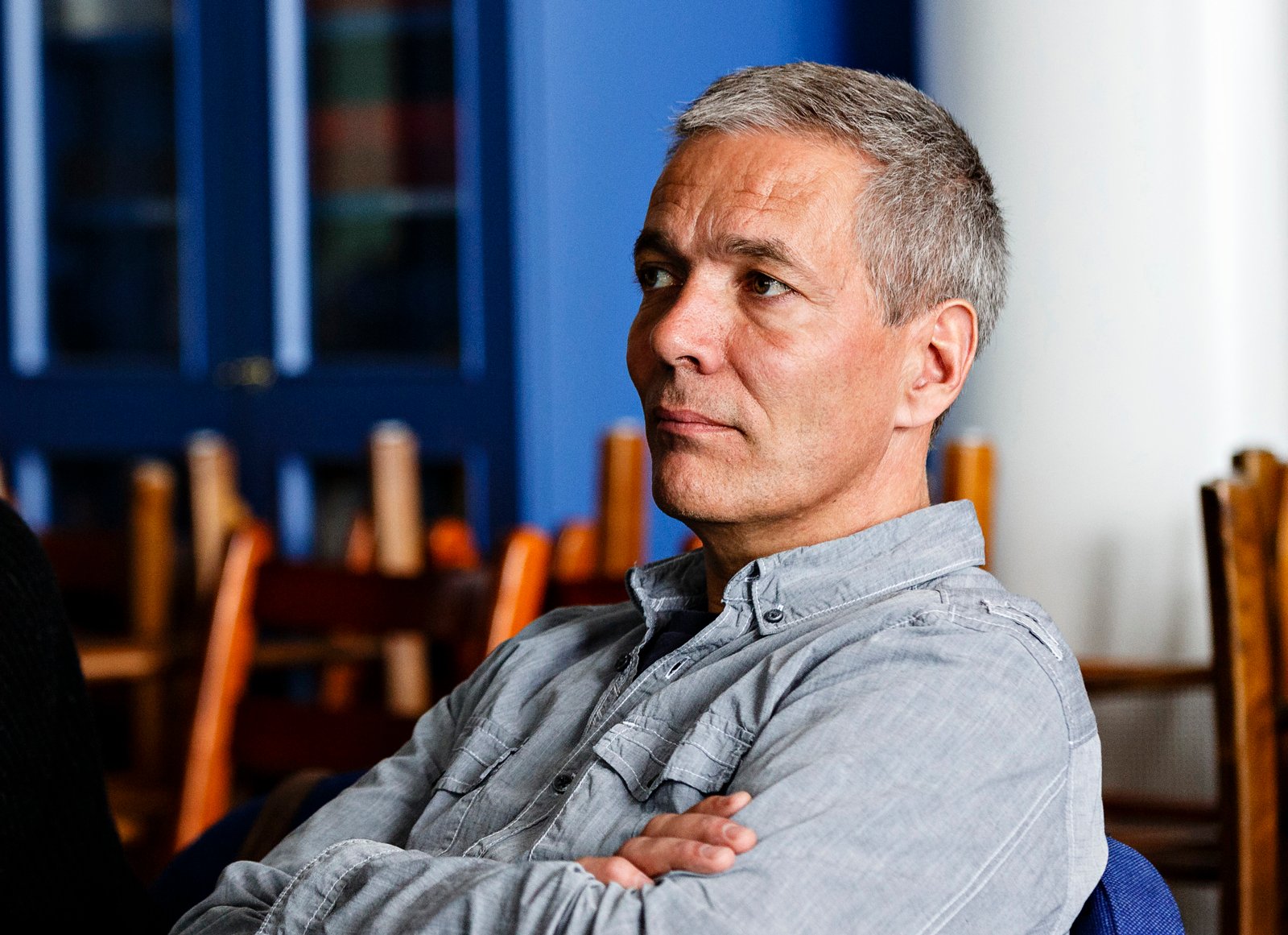
“Innovation means asking the questions you don’t even know existed", says Sverre Gotaas, Group Vice President Innovation in KONGSBERG.
-
Text:UNNI SKOGLUND
Photo:KILIAN MUNCH
-
Ove Ronny HaraldsenGroup Communication Manager
Sverre Gotaas strides over to the window and takes hold of the heavy blackout curtains. “This is the control room. We’re able to micromanage most things from here”, he says as he lets in some September sunshine.
As manager with responsibility for KONGSBERG’s focus on innovation, he has a lot to do. There will be a lot of time spent on business trips this year, around 70-80 days as well as lots of day trips. He is in Trondheim today. In the control room of Kongsberg Maritime in Lade, three of the six large computer screens are activated by his colleague Kjetil Sølvberg, the project manager.
THE BIG PICTURE
The wind farm at Hundhammerfjellet in Nord-Trøndelag is currently being monitored. Each individual wind turbine can be controlled from here. Sølvberg sits with the levers. After pressing a few buttons, he shows me the wind direction and the amount of energy that the individual turbine is producing, but the objective is to see the wind farm as a whole. This is where the innovation lies: Wind Farm Management.
“A turbine does not stand alone, so we look at the overall picture. The end result is a more effective park, and the life of the turbines is also extended. With the Wind Farm Management system, we can customise solutions based on customers’ needs and business models”, says Gotaas.
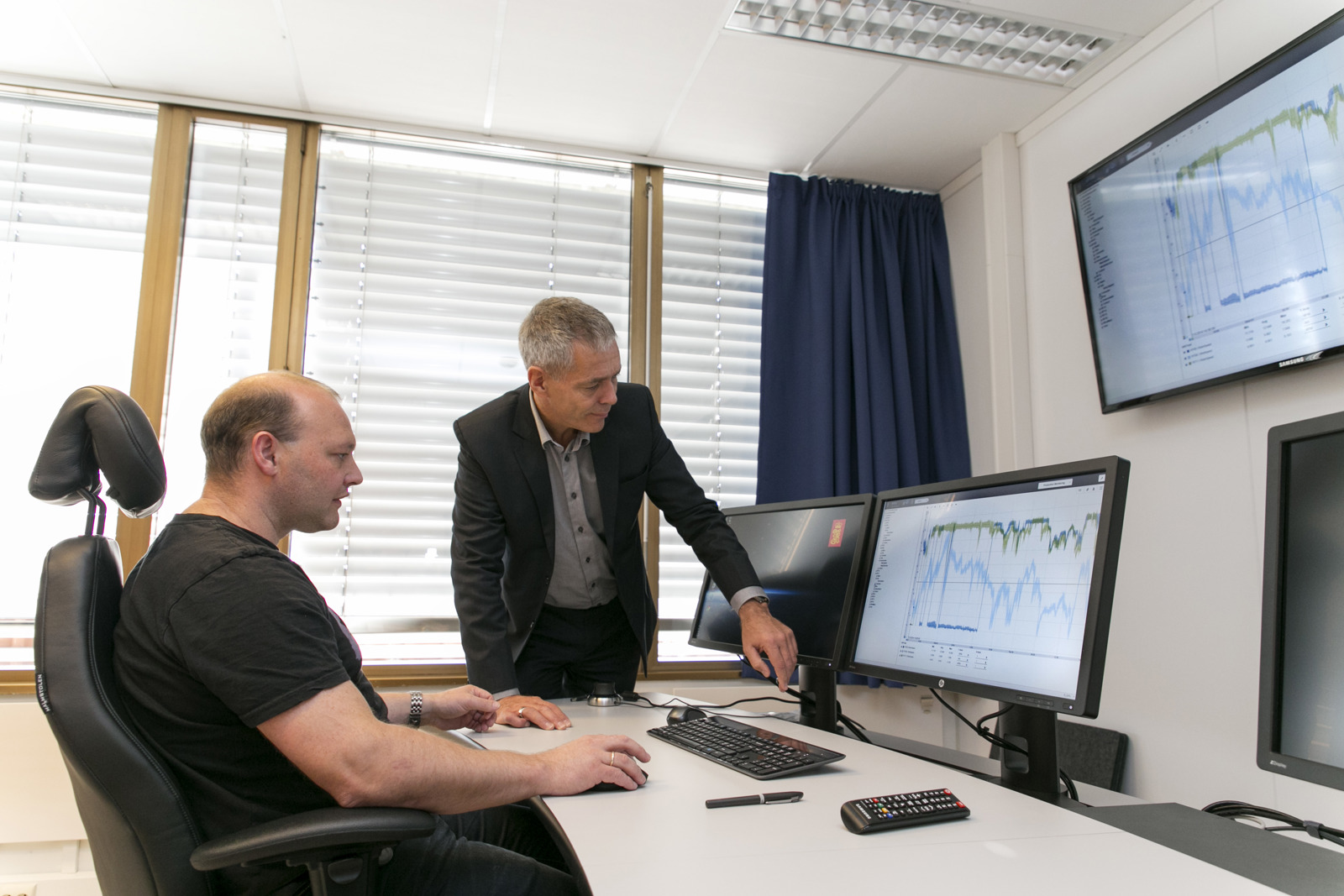
He explains that in a wind park, the front turbines take the main power from the wind, but if they are set properly those at the back can also provide a good yield. Wear and tear is also an important element; therefore, the condition of each individual turbine is carefully monitored. Servicing is done at a time when the turbine would not be moving anyway. In addition, work is done on forecasting the wind direction and speed in the future. It is useful for the energy producer to obtain an estimate of how much energy can be sold.
“Our customers say that this method of managing the wind farm is completely unique”. Gotaas talks while different images from the wind farm are shown on the monitors.
He is articulate, focused and engaging. He was involved when KONGSBERG decided to focus on wind energy: After some 20 years at KONGSBERG, he worked for 4 years at Norwegian state-owned electricity company, Statkraft. While there, he was visited by a delegation of his former colleagues. They wanted advice on what was worth investing in with regard to renewable energy. “Wind energy!” was his definitive answer. Back in KONGSBERG, this was Gotaas’ first task.
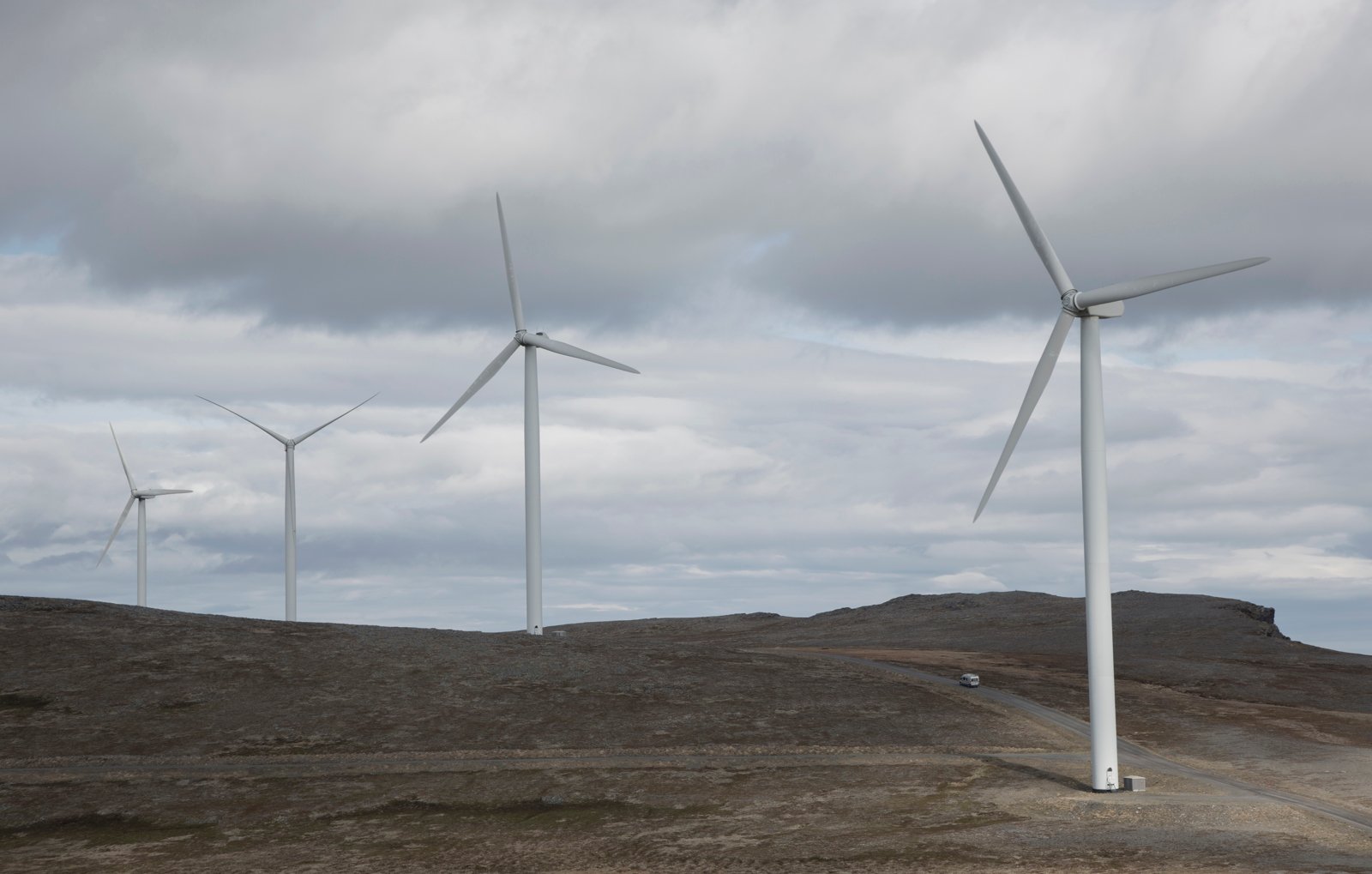
“Wind energy was, in fact, quite far from KONGSBERG’s core business. At the same time, we have made good use of the expertise we have built up around management systems”, he points out, adding: “The way we manage the wind turbines also describes the way in which KONGSBERG works in general: We try to form an image of how the world looks and then use this in a way that benefits the customers and us”.
GEARING UP FOR A FOCUS ON INNOVATION
KONGSBERG has been in existence for 200 years. “We are very good at innovation, but now we are stepping it up a gear. Going forward, we will focus more on what we are not currently involved in. We’ve got to stay ahead of our competitors”, Gotaas says.
Innovation could have been his middle name. Using different approaches, this is what he has been doing for over 30 years. When he is not spending time with his family, at home or at their holiday cottage in Gautefall, his thoughts revolve around innovation. And even at his holiday cottage, between doing carpentry, staining the walls and fishing trips, some thoughts on innovation can find their way in.
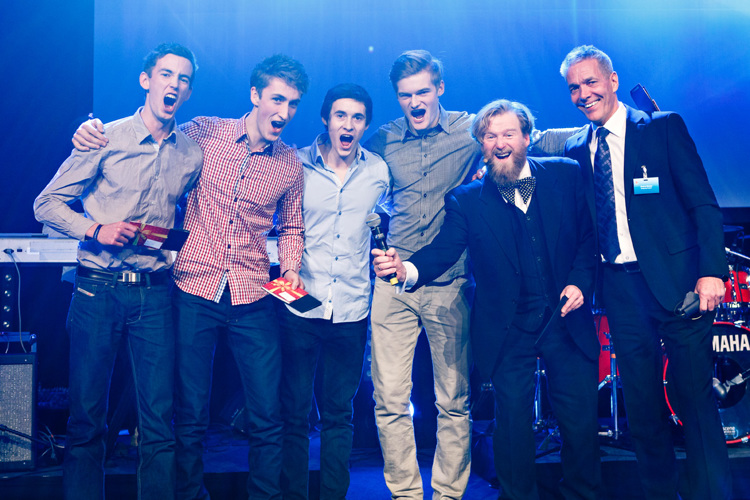
“I’m so lucky to have a job that I’m passionate about. I facilitate and initiate innovation.” So it is no surprise that he is the one managing KONGSBERG’s new focus, the Innovation Accelerator Arena. This involves an innovation model and an innovation system. The idea is to combine the brain power of everyone at KONGSBERG and work on innovation processes.”
“There are 7500 people working here, and we want to harness this combined intellectual power. It will be easier for everyone at KONGSBERG to contribute to and find new solutions”, says Gotaas.
INNOVATION CHALLENGES
A number of Innovation Challenge Campaigns have been carried out. One of them, E-navigation, is a generic term for systems that simplify the operation of vessels. The system should provide information and advice so that it will be easier for the skipper to make good decisions, while a number of tasks will be automated or done in places other than on the ship.
“One other has been named the Subsea Storage Unit. In this campaign, we worked with an enormous underwater “flexible bag”, where oil from a production unit can be temporarily stored until it is collected by the ship. This avoids the need for more expensive, floating storage systems, while also ensuring that we are not at the mercy of weather conditions”, says Gotaas.

“We have learned a lot during the campaigns. We have tested the data system and our work methods. The accelerator part is about reducing the time from the emergence of an idea until it becomes a saleable product”, says Gotaas.
“KONGSBERG’s new focus on innovation will be implemented in stages. Our long-term goal is that everyone in the group will be able to contribute to this focus on innovation across the business areas. Often ideas come from between or outside business areas. These are often put aside as they do not have a natural home that can drive them forward. We want to change this; we will become better at utilising such input, while also adopting the great expertise that the group possesses as an aid in achieving the finished product or service”, he points out.
ON OLD SITES
We leave the control room. There are new items on his agenda. From Kongsberg Maritime, the tour goes to the city’s intellectual stronghold: the Norwegian University of Science and Technology (NTNU). Gotaas is at his alma mater here at the former Norwegian Institute of Technology (NTH) at Gløshaugen. Even though his dialect has changed, there is no mistaking the fact that he is from Trondheim. He lived in the city until he was 26 and was educated at NTNU.
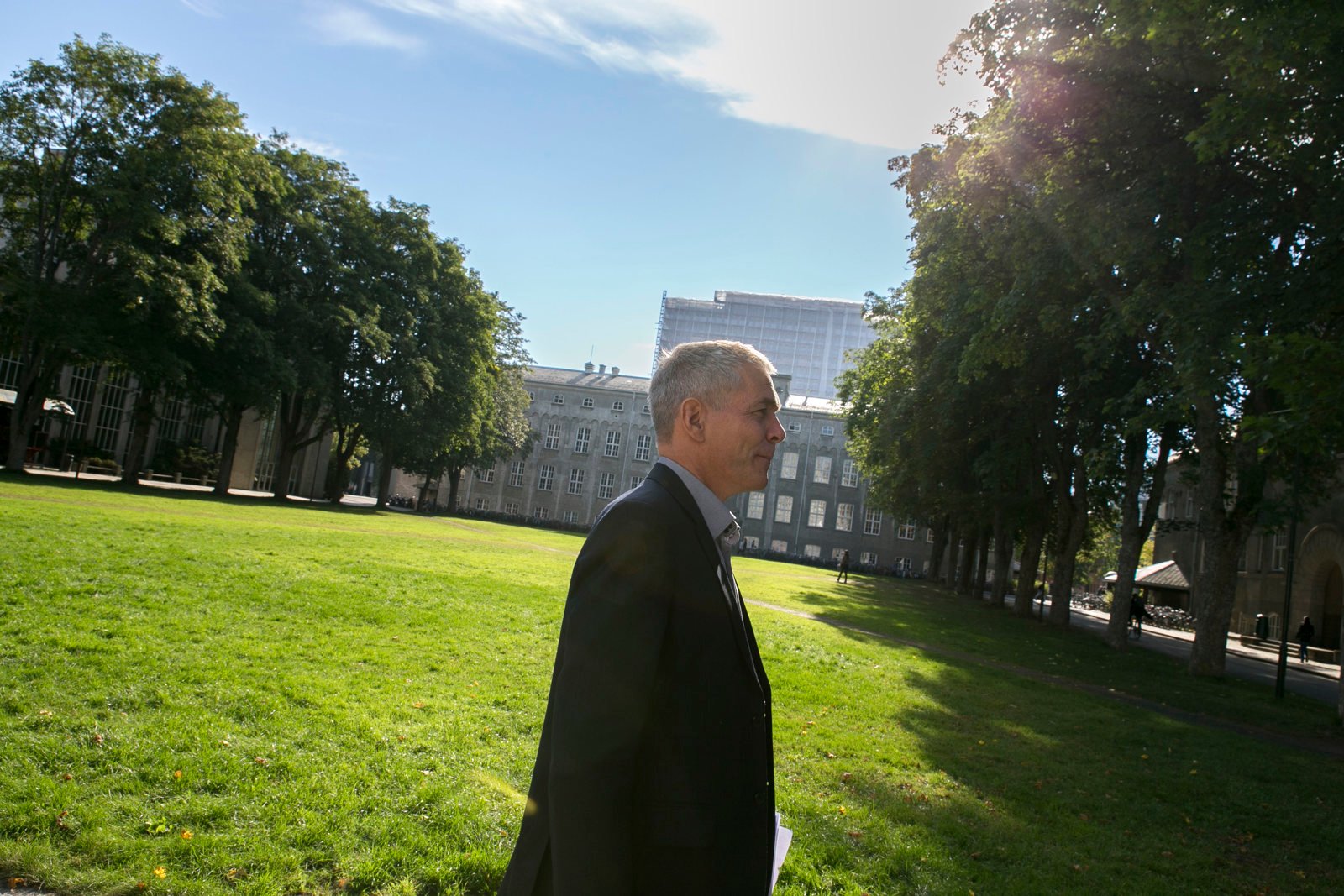
“If there’s work to be done in Trondheim, I’m happy to oblige”, he says with a broad smile: “I still have family and friends in the city. He is going to meet Morten Breivik now, the manager of the Institute of Technical Cybernetics. It is from this institute that KONGSBERG mostly recruits. In fact, the head of the institute previously worked at KONGSBERG. They will discuss how the students can be motivated to take part in the “Your Extreme” innovation competition organised by KONGSBERG.
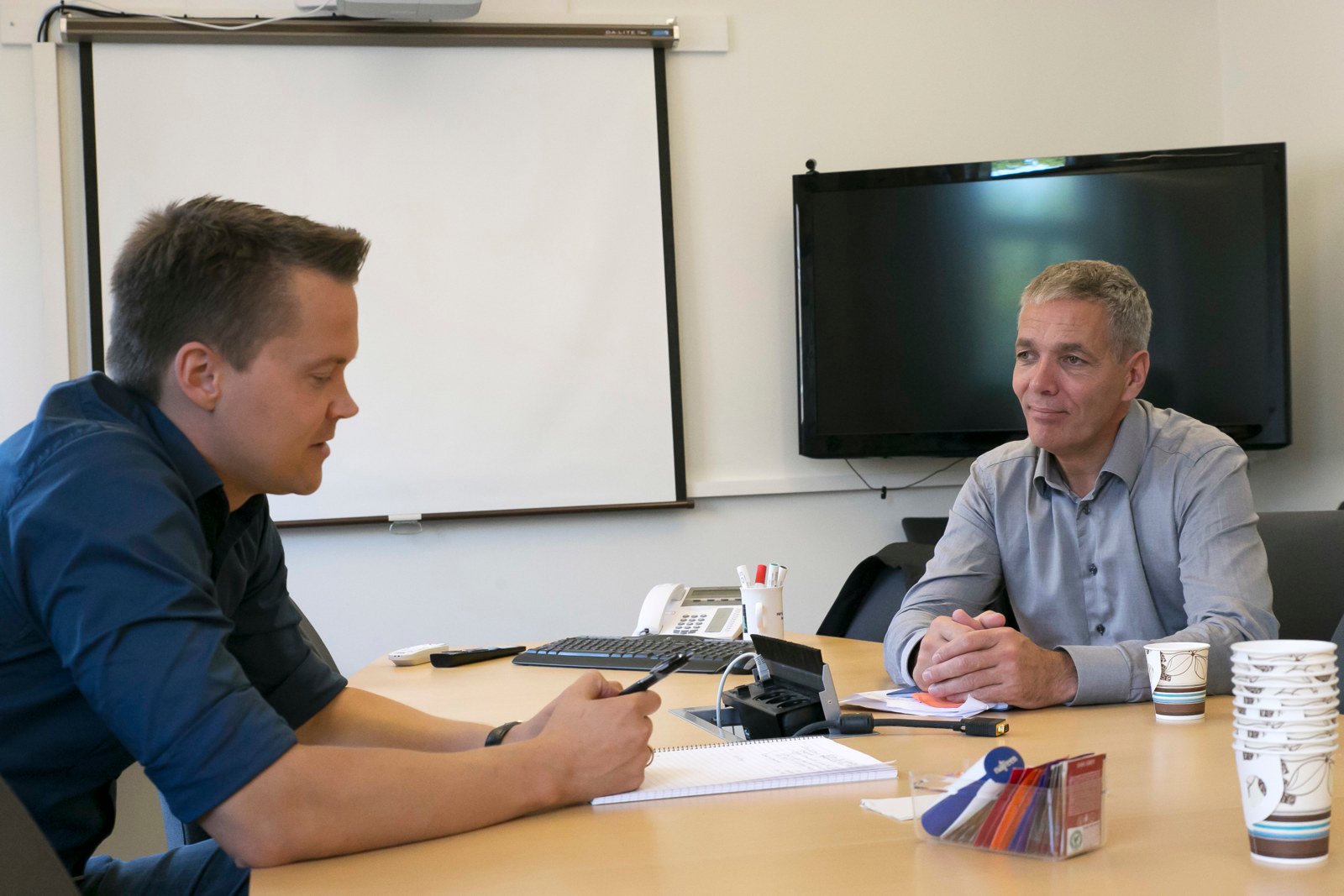
The tone is easy-going and based on mutual understanding. They take turns talking and listening. “NTNU is really important for us. We don’t know exactly what skills we’ll need in the future, but we definitely need bright people”, Gotaas says. On the way from the meeting, we pass a glass display case containing paraphernalia from the academic student organisation, Omega. “I was involved in putting that book together”, Gotaas says, and for a few seconds his thoughts go back to his student days.
“There was probably a bit too much partying involved but the academic student organisations have an important role. They create an identity for the academic area and are important for the social community”, he comments. Hopefully, the coming generation of students will join KONGSBERG, a company that is continually developing.
“Progress is being made at a phenomenal rate and we need to be innovative to succeed! Fortunately, innovation is something that we are good at in KONGSBERG, and we aim to be better at harnessing it”, says Gotaas.
